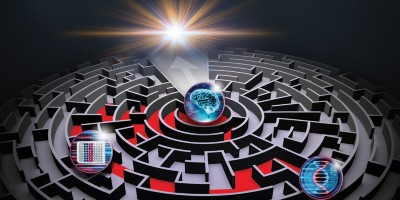At the start of 2001, the UK became the first to approve the creation and use of embryos for stem cell research. In response to a report by the country's Chief Medical Officer, Parliament condoned the decision last December. Because of the nature of this legislation, approval was also needed by the House of Lords which was granted in January. Although onlookers may assume that scientists in Britain are fully behind the decision, the subject elicits as much controversy within the UK biomedical research community as elsewhere. The following two Commentary articles, written by experts working in the field of reproductive research in London, illustrate this disunity.
References
Sinclair, K.D et al. Aberrant fetal growth and development after in vitro culture of sheep zygotes. J. Reprod. Fertil. 116, 177–186 (1999).
Handyside, A.H., Kontogianni, E.H., Hardy, K. & Winston, R.M.L. Pregnancies from biopsied human preimplantation embryos sexed by Y-specific DNA amplification. Nature 344, 768–770 (1990).
Blau, H.M. & Blakely, B.T. Plasticity of cell fate: insights from heterokaryons. Semin. Cell. Dev. Biol. 10, 267–272 (1999).
Ourednik, V. et al. Neural stem cells are uniquely suited for cell replacement and gene therapy in the CNS. Novartis Found. Symp. 231, 242–62 (2000).
Mezey, E., Chandross, K.J., Harta, G., Maki, R.A. & McKercher, S.R. Turning blood into brain: cells bearing neuronal antigens generated in vivo from bone marrow. Science 290 1779–1782 (2000).
Shihabuddin, L.S., Horner, P.J. Ray, J. & Gage, F.H. Adult spinal cord stem cells generate neurons after transplantation in the adult dentate gyrus. J. Neurosci. 20, 8727–8735 (2000).
Fallon, J. et al. In vivo induction of massive proliferation, directed migration, and differentiation of neural cells in the adult mammalian brain. Proc. Natl. Acad. Sci. USA 97, 14686–14691 (2000).
Shinohara, T., Avarbock, M.R. & Brinster, R.L. Functional analysis of spermatogonial stem cells in Steel and cryptorchid infertile mouse models. Dev. Biol. 220, 401–411 (2000).
Edwards, Robert G. in Fetal Tissue Transplants In Medicine. (ed. Edwards, R.G.) xi–xii (Cambridge University Press, Cambridge, 1992).
Evans, M.J. & Kaufman, M.H. Establishment in culture of pluripotential cells from mouse embryos. Nature 292, 7634–7638 (1981).
Kuehn, M.R., Bradley, A., Robertson, E.J. & Evans, M.J. A potential animal model for Lesch-Nyhan syndrome through introduction of HPRT mutations into mice. Nature 326, 295–298 (1987).
Hooper, M.L. Hardy, K. Handyside, A. Hunter, S. & Monk, M. HPRT-deficient (Lesch-Nyhan) mouse embryos derived from germline colonisation by cultured cells. Nature 326, 292–295 (1987).
Delhanty, J.D.A., Harper, J., Ao, A., Handyside, A.H. & Winston, R.M.L. Multicolour FISH detects chromosomal mosaicism in normal preimplantation embryos from fertile patients. Hum. Genet. 99, 755–760 (1997).
Author information
Authors and Affiliations
Rights and permissions
About this article
Cite this article
Winston, R. Embryonic Stem cell research - The case for.... Nat Med 7, 396–397 (2001). https://doi.org/10.1038/86442
Issue Date:
DOI: https://doi.org/10.1038/86442
- Springer Nature America, Inc.


